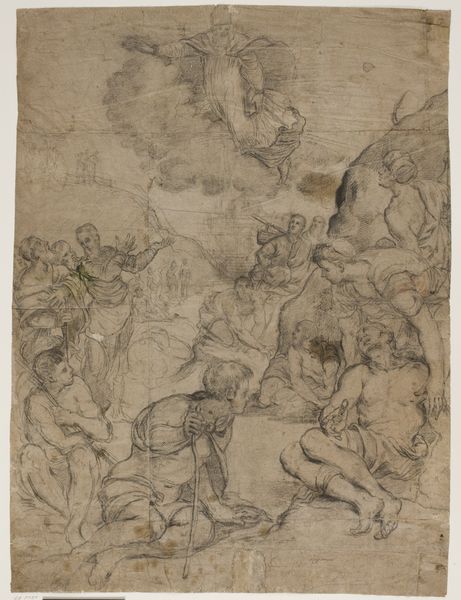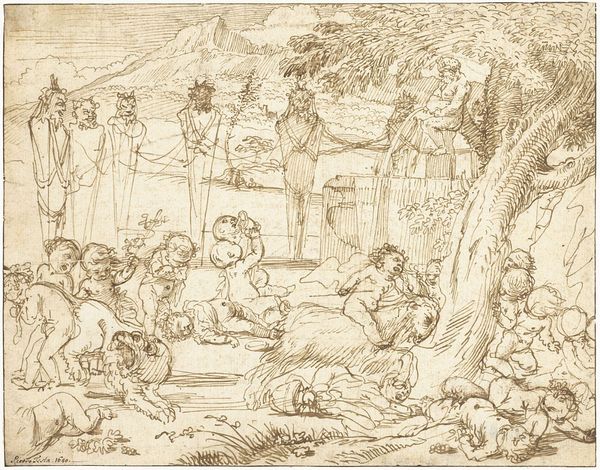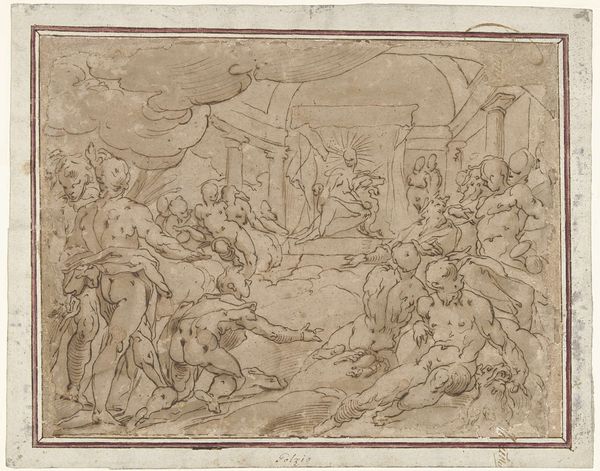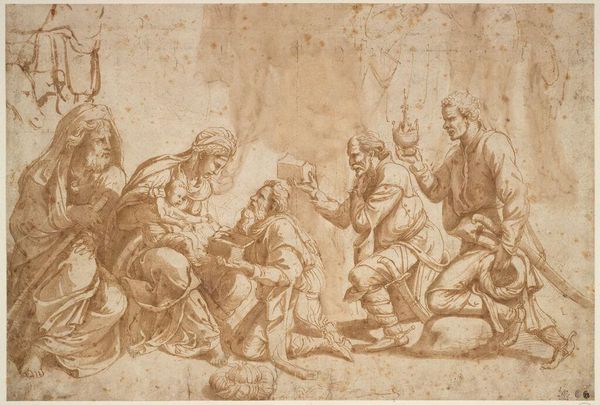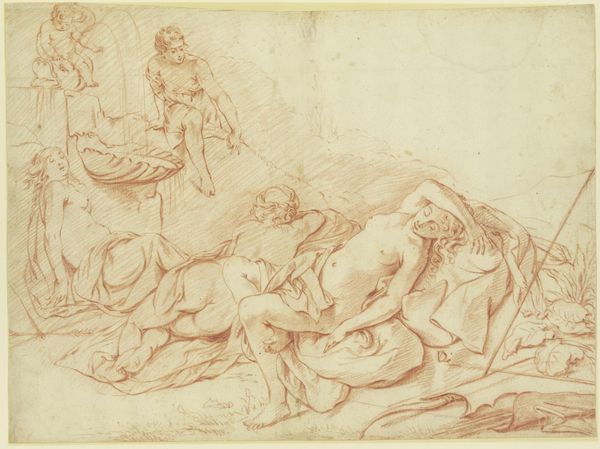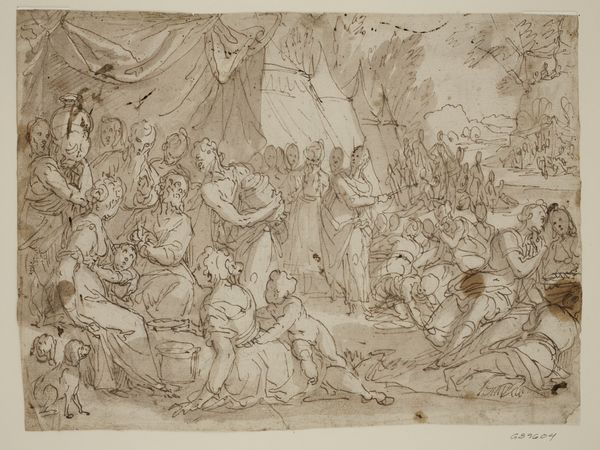
drawing, etching, paper, ink
#
drawing
#
narrative-art
#
baroque
#
ink painting
#
etching
#
etching
#
figuration
#
paper
#
ink
#
line
#
history-painting
Dimensions: height 105 mm, width 390 mm
Copyright: Rijks Museum: Open Domain
Curator: Here we have "Ontwerp voor een graflegging met links de wenende Maria," or "Design for a Burial with the Weeping Mary on the Left," a drawing in ink and etching by Jacques Stella, dating sometime between 1606 and 1657. It's currently held here at the Rijksmuseum. Editor: The first thing that strikes me is the sheer desolation, that profound sorrow practically radiates from the paper. The muted tones, the almost frenzied lines—it really conveys the weight of grief. Curator: It certainly aims for that. Stella, a prominent figure in French Baroque art, created this as a study, a preparation for a larger, more finished piece, likely a painting. We see him grappling with the composition, the arrangement of figures within the narrative of Christ's burial. Note how he uses line to create drama. Editor: And look at the positioning of Mary, weeping on the periphery. Even in grief, women are so often relegated to the sidelines. How does this placement speak to the role of women in the church at this time? Is her sorrow valued or simply witnessed? Curator: That’s a valid reading. The church's role, its institutions and how it positioned both powerful figures and its ordinary faithful—that was indeed a consideration in artwork from the period. Though the subject is Christ, and the burial a political necessity as much as a display of sorrow. Editor: It raises interesting questions about power dynamics in both the religious narrative and the artwork itself. Who is centered? Whose story is being told, and whose grief is validated? The act of depicting this scene reinforces certain social structures, even while attempting to convey universal sorrow. Curator: It’s a balance, I think, that Stella attempts. The universality of grief, set against a very specific religious and political backdrop. These narrative scenes also served as instruction—reminders of faith and the need for social order. Editor: So, this image serves not just as art, but as a tool for reinforcing existing power structures through the emotional manipulation inherent in representing profound sorrow? Curator: It functioned within that complex web of artistic, religious, and social expectations, yes. Editor: Understanding those expectations then provides an important lens through which we can appreciate Stella’s mastery—or perhaps interrogate his choices, even centuries later. Curator: Exactly. A work like this isn't just a static object; it's a cultural artifact, shaped by its time and still capable of sparking conversation today.
Comments
No comments
Be the first to comment and join the conversation on the ultimate creative platform.


